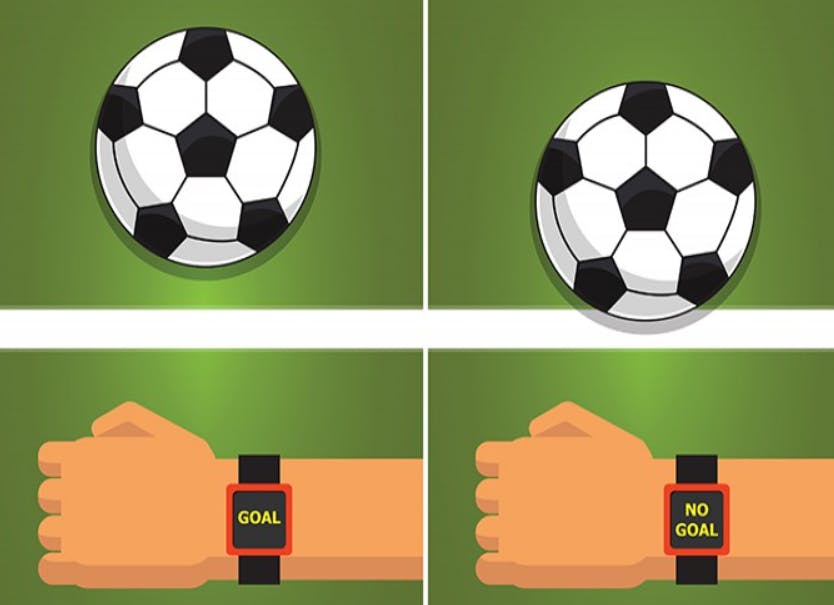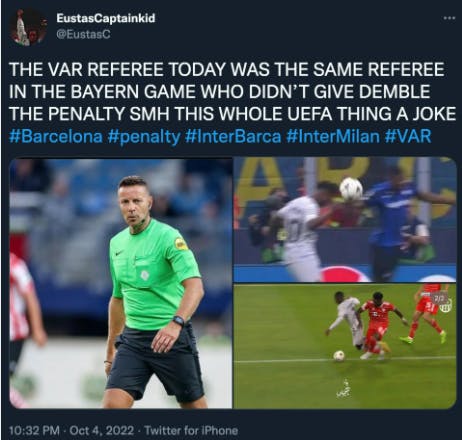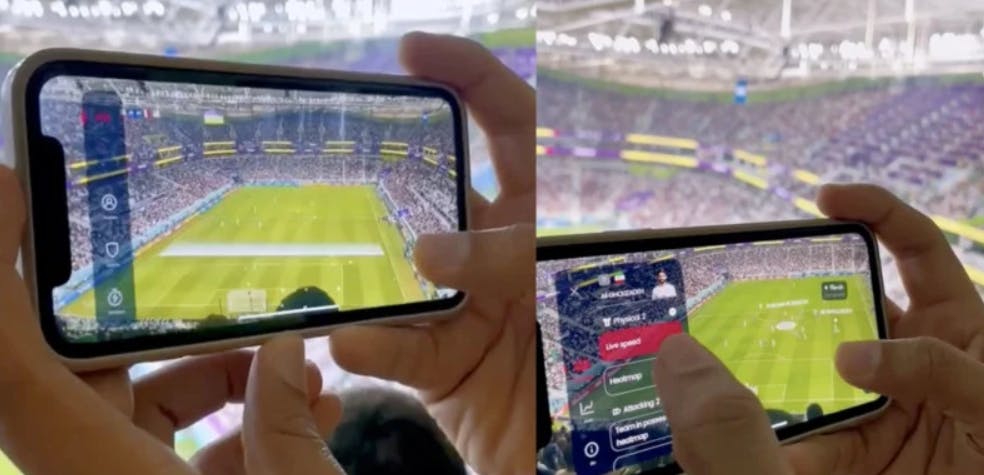Introduction:
"I learned all about life with a ball at my feet"
-Ronaldinho
This quote by the Brazilian football legend Ronaldinho sums up the beautiful game of football. It has really been an integral part of millions of lives around the world. From all the World Cups to Champions League finals, it has given people memories to remember forever. And to sustain this attachment and to even capitalize on this, football has kept evolving over time. In terms of scale, quality and different technical aspects, it has kept growing. And to do this technology has been a crucial factor. And just to know how important technology has become for the sport, Qatar after winning the hosting rights to the World Cup invested more than 300 billion dollars to build their infrastructure which includes all 8 smart stadiums, all the smart cameras that are used for tracking the smart balls and the players, creating an advanced cooling system for the stadiums, the semi-automated offside system, etc. Because of this, technology has become the 12th player of the game.
The need:
Right decision: In football, there is only a single referee who is running around the players along the pitch monitoring every kind of action/incident which takes place on the pitch. So, every major decision like in case of a foul attempt whether to show a card or just give a warning, in case of handball situation, in case of injury situation has to be taken by the referee. And considering the length of a football match being 90 minutes (without considering any extra time), it is impossible for the referee to make the correct decision at every instance. And hence, to keep match proceedings in an unbiased way, technology is necessary.
Transparency: In a football game, almost after every decision taken by the referee, there are debates between the fans/viewers regarding the correctness of the decision. Many such decisions and debates eventually lead to distrust within the football community. And if we look at the incidents which took place in 2009 Champions League semi-finals between FC Barcelona and Chelsea, where numerous odd and controversial decisions were made which led to the famous words ‘This is disgrace’ by Didier Drogba, transparency becomes an important factor.
Preparation: Even for training, many football clubs wanted technology to get the best out of their players. They wanted such a mechanism that would not only track the fitness and physical attributes of the players but also help improve and enhance it. And today’s technology can and does provide to each and every need of theirs.
The technology:
Goal-line technology: Despite many iterations in the past like the smart ball system, Hawkeye system, etc. Goal line technology was first introduced in 2013 with tests and trials going on for a year and the tech getting approved for the 2014 FIFA World Cup. This technology was introduced for making a correct decision in controversial situations of ‘whether the ball has crossed the goal line’. In football, the goal is given only when the ball has completely crossed the goal line which is under the goal post. Even a bit of the ball touching the line and the goalkeeper keeps up the ball won’t be considered a goal. Therefore, in situations where it is not clear whether the ball has completely crossed the line or not, this kind of mechanism comes to the rescue. This has been a revolutionary step in football because it literally decides whether a team has scored or not. A note-worthy incident prior to 2013 where goal line tech would have been useful was the infamous 2010 round of 16 match between Germany and England where Germany won by a gigantic margin of 4-1. In this match, England’s Frank Lampard had struck the ball well, and it ricocheted off the goal post and had in fact crossed the goal line, but due to ambiguity, the goal wasn’t given by the referee.

VAR (Video Assistant Referee) : Video assistant referee has been a time traveling machine for the field referee. Because, it actually helps the field referee to relive a crucial moment and then make a decision. It went through many testing phases during the 2010s and was finally implemented in the 2018 FIFA World Cup. Many times in case of tackle attempts, penalties, offsides, any kind of violations, etc. the field referee is not able to give a concrete decision or even if the decision is given, it necessarily may not be correct. In such situations either the field referee asks for the video assistant referee who is sitting in a room full of computers and other machines monitoring the situation to review the incident or VAR recommends the field referee a solution itself. In such scenarios, the field referee either sticks to the original decision he/she has given or takes the recommendation and changes the decision or the field referee himself/herself goes to the review screen which is kept near the pitch to examine the situation again and give a correct decision. In any case, VAR’s responsibility is to assist the field referee to carry the game in an unbiased and correct way. Hand of god, a memorable incident, where football legend Diego Maradona used his hand for scoring a goal against England in the quarter-finals of the 1986 World cup would have had a very different outcome under the VAR system.
- Analysis: In today’s game of football, analysis of every aspect of the game has been a talking point in every kind of conversation surrounding the sport. And a lot of its credit goes to the Artificial intelligence and Machine Learning tech which is used for in-depth analysis. Many tools like heat map, which helps track a particular player and give information about the positioning of the player and the major portion of the field where the player has been active. xG, a tool/mechanism which gives information about the expected goals from a team after analyzing the various situations in the match where the team had opportunities to score a goal. Such tools also give an in-depth analysis of which side(left, right, center) a team prefers to proceed from while arriving in the opposition’s half. And the modern tools also give a never ending number of stats regarding a particular player in a particular match. Whether it be the pass accuracy of the player, number of shots the player has taken, the number of shots on target, the number of ground and aerial duels a player has won, long balls the player has given, interceptions a player has made, etc. And now with the help of smart balls, these stats are getting more accurate. In FIFA World Cup 2022, ‘Al Rihla’ made headlines because it had a motion sensor inside it and cameras around the stadium could capture its movements 500 times per second and hence, making decisions like offside calls easy. These stats are not just used by teams for their preparation but also have been a proven entertainment factor for the fans as well, since they are calculated in real time while the match is going on, fans sitting at home get both technical and entertainment perspectives because of it.
The dark side:
Too calculated: Well, with the utilization of so much tech, many people argue that the beautiful game of football is getting more robotic. For every small instance (at least according to fans), referees use the VAR technology and examine every situation so meticulously that the human touch of the game is fading away, and it has become more calculated. Although this makes the game go in a justified and correct way which was the need in the first place, but also makes it too uptight and sophisticated.
Losing identity: Football as a sport has been very physical, rough and raw from the beginning. Body blocks, slide tackles, etc. have been an integral part of the game. But with the increasing use of technology the game might be losing its physicality. And the main issue is that the tech which is used is also not 100% accurate. Sometimes, even for a small body contact, VAR punishes and treats it like a major foul. Even in goal line tech, even if 0.001% of the ball is touching the goal line the goal is not given, which seems a bit harsh. Because of this some might think, football is losing its identity.
Unfair advantage: If we look from an economic point of view, all the clubs can't afford to have technology which helps players in training sessions. Because of this, an unfair advantage is provided to the bigger and richer clubs which creates a big divide between them and the smaller clubs with less capital. And this eventually creates an economic distress between the clubs as well as leagues, where a league like Premier League has all the capital and attraction in the world while a smaller league like Eriedivisie doesn’t gain that much attraction even though in terms of quality of football they wouldn’t be that apart.
The cultural impact:
Although it would seem that technology has only affected 22 people within a time frame of 90 minutes, its impact goes beyond it and affects millions of fans around the world. Because of the various latest tools of analysis, immeasurable amounts of data regarding the game is available to common viewers/fans. Because of this, the conversations between fans of the same club or the debates between fans of different clubs has become very interesting. And this is clearly seen on social media, where tons of fans argue and debate based on such data and come up with their own hypothesis of why their club is better than the others. Uncountable amounts of threads are posted on ‘X’ reviewing and analyzing a single incident which might have happened during the match. And this is because the data regarding that incident was available to the fans.
We even get to see the hypocrisy of the fans when technology like VAR helps win their team an unfair decision. But at the end of the day, this all culminates to ‘Football’ as a sport garnering a large amount of fans day by day.

The future:
This is just the beginning of the utilization of advanced technology in football. In the coming years, technology is going to totally transform this sport. A proper introduction of augmented reality would enhance analyzing a match even more. Smart jerseys with sensors installed in them would help to track a player’s movement and motion even better. Upcoming technologies would even help teams predict the injury rate of a player for the upcoming season, which in turn helps the team build squad depth accordingly. Even in recovery sessions of players, robotic weightlifting devices have started to be installed which help them recover quickly. For fans as well, VR headsets would be designed to give them an experience of sitting in the stadium no matter where they are. Because of this, the beautiful game of kicks, dribbles and tackles is going to be changing drastically. Although it is good for the development of the sport, surely it would come up with its own set of controversies. In any way, fans are surely in for a treat.

